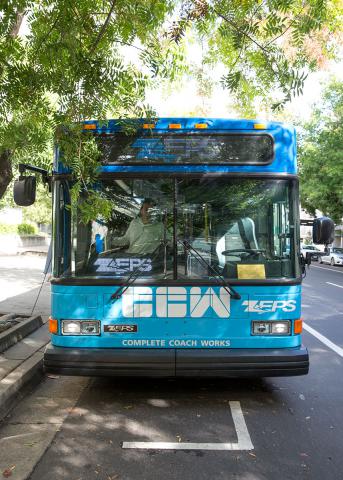The Clean Transportation Program focuses program investments into zero-emission technology projects, where feasible, and near-zero-emission projects elsewhere. The program also invests in fueling stations for public and fleet vehicles that support the accelerated deployment of these vehicles.
MDHD vehicles have a gross vehicle weight rating above 10,000 pounds and include school and public transit buses, freight, and other fleet vehicles. These vehicles produce a disproportionately large portion of the state’s greenhouse gas emissions, given their relatively small numbers, and also produce significant amounts of air pollution.
Through the Clean Transportation Program (formerly known as the Alternative and Renewable Fuel and Vehicle Technology Program), the California Energy Commission is investing in projects throughout California that accelerate advancement and adoption of MDHD vehicle technologies that produce zero or near-zero emissions. The program also invests in fueling stations for public and fleet vehicles that support the accelerated deployment of these vehicles.
The Clean Transportation Program's investments support the state’s efforts to achieve its climate change goals and improve air quality. These investments also support the state’s progress toward a sustainable freight system, as well as the transition of California’s ports to zero- and near-zero emission vehicles and equipment.
The Clean Transportation Program utilizes various funding mechanisms to distribute funding for MDHD zero-emission vehicle infrastructure projects, which include:
- Competitive grant funding opportunities – The CEC issues targeted solicitations for specific MDHD project types. Applications are evaluated through a competitive scoring process, with selected projects resulting in funding agreements managed by CEC Commission Agreement Managers.
- Block grants - The CEC uses this funding mechanism to distribute Clean Transportation Program funds through third-party implementers, which are selected through a competitive process. MDHD ZEV Infrastructure block grants include the EnergIIZE Commercial Vehicles project and the Zero-Emission School Bus Infrastructure (ZESBI) Program.
- Loans - The CEC has recently partnered with CARB and the California Pollution Control Financing Authority on a loan program for zero-emission vehicle infrastructure called Zero-Emission Heavy-Duty Infrastructure Loan Pilot Project.
Benefits of MDHD Vehicles with Zero or Near-Zero Emissions
- Produce significantly fewer greenhouse gas emissions and air pollutants than conventional medium- and heavy-duty vehicles, when utilizing renewable fuels
- Transitioning to medium- and heavy-duty vehicles with zero emissions creates jobs
- Provide cleaner air for the surrounding communities, many of which are severely impacted by air pollution
- Maximizes investment, with significant reductions of greenhouse gas emissions resulting from replacement of a relatively small number of vehicles

